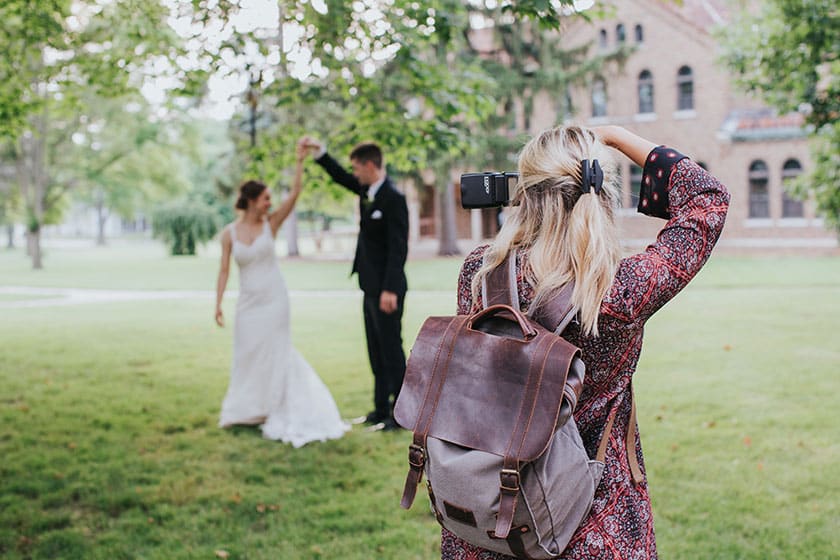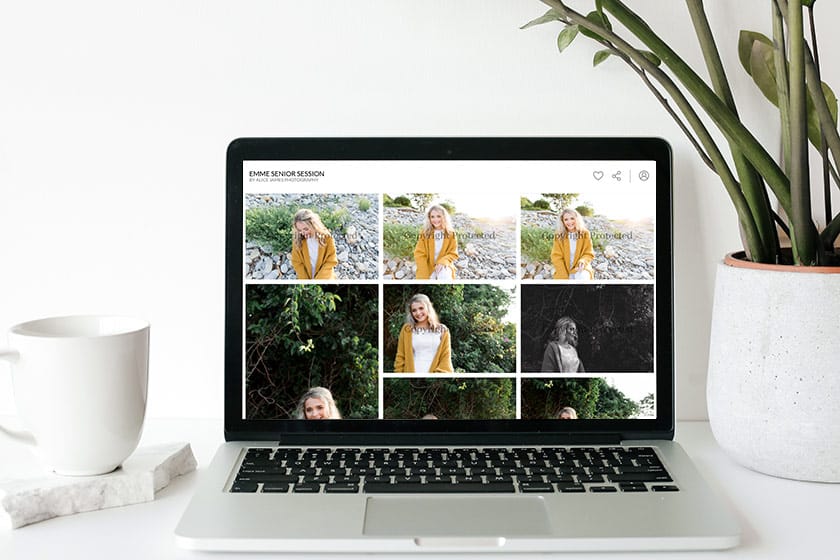How to protect your images with printing rights and a print release.
March 9th, 2022
No matter what style of photography you specialize in, understanding your rights as the creator behind those images is important. Without this basic understanding, you can easily be taken advantage of and have your work exploited.
In order to help you avoid this predicament, we’re going to go over your print rights as a photographer and help you better understand the difference between print rights and a print release.
Equipping yourself with this knowledge can help you protect yourself as a photographer, so let’s dive in!
What are print rights?
Print rights are an agreement that you, the photographer, can provide clients with, stating that the client now has the right to print your photos.
For example, as a wedding photographer, you’ll likely provide your clients with printing rights that give the clients permission to print their wedding photos for personal use (i.e. to hang in their home, to use in thank-you cards, and to send to friends and family).
Personal use has a very limited application. With this kind of printing rights, the client does not have the right to use the images for any commercial purpose, like promoting their business, selling it on a stock site, or repurposing into another form for resale.
These days, print rights also often include digital rights. In other words, you are giving clients permission to post the photos to social media like Facebook, Instagram, as well as to other digital platforms.
Remember, as the photographer you still own the photo (copyright), but you’re essentially allowing the client to “rent” the photo for their own use.
There are also situations where clients may want commercial printing rights. This is a normal practice, but it’s important to consider a few key factors; what the limits of the rights are, how to price the printing rights and, of course, making sure these are clearly defined in the contract, or print release.
How much do photographers charge for printing rights?
When coming up with a price for printing rights, think of it this way: how much would you charge to sell a print of the photo, or the photo itself? That’s essentially what you’re doing when you provide clients with printing rights. While you still own the copyright of the image and the client can’t commercially sell/alter your photo, you are essentially selling the (possibly exclusive) use of that photo to them for the period of time determined in the contract.

Here are some factors that will help you determine the price for printing rights:
- How much time did you put into the photo(s)?
- The equipment used
- The amount of editing
- Any travel associated with taking the image(s)
- Did you require a photography assistant or other added expenses?
- The actual subject matter itself (i.e. charge higher printing rights for more exclusive imagery)
- How many images are included? (i.e. if you’re providing the client with a package of images during a photoshoot session, this should cost more than if you’re just releasing one stand-alone photo)
- What quality is the image file? (i.e. if you’re sending lower quality files so that clients can only print 4×6 images, this should reduce the price you charge)
- Are you providing unlimited printing rights or only a certain number (i.e. some photographers will limit how many times a photo can be downloaded/reproduced, while other photographers provide unlimited downloads so clients can print as many photos as they want)
- Your experience (i.e. a fine art photographer who is well known in the industry can charge more for their photos than someone with one year of experience)
- The type of client: Commercial (aka a company or brand using in campaign) will have a higher cost, vs. personal client use (i.e. parents of bride or family portrait session ordering printed gifts for friends and family) will typically have a lower price tag.
As you can see here, pricing for printing rights varies widely depending on multiple factors, but in general, printing rights can range anywhere from $10 to $20,000. Determining what your printing rights should cost is dependent on the factors listed above.
What is a print release?
A print release is the written agreement that you provide to clients when giving them printing rights. In other words, you include printing rights in your print release agreement.
You can also think of it this way: If a client is interested in printing your photos themselves (rather than ordering prints through your custom online store), you grant them printing rights by having them sign a print release.
This might lead you to question…
What’s the difference between printing rights and a print release?
And essentially, there isn’t one. Printing rights and a print release form are essentially the same thing. The only big difference to be aware of is that printing rights are contained within a print release agreement.
Knowing the difference between these often misused words can not only help protect you as a photographer but also provide you with more professionalism and legitimacy around your work.
What is print release vs copyright?
Once you understand what a print release is, you have to be careful about ensuring you still own your photos. You do this by understanding the difference between print release and copyright.
A print release gives clients printing rights to use your photos. Copyright gives you (the photographer) ownership of your photos. In your print release, explicitly stating that you still own the copyright on your photos is essential.
Owning the copyright allows you to use your photos for professional branding and marketing purposes. For example, if you’re a newborn photographer, your clients will sign a print release so that they can have printing rights to the photos. In your print release, you also need to state that you still own the copyright so you can share these images to help build your business (i.e. sharing imagery on Instagram and/or your website portfolio to help attract new clients).
While photographers can do a copyright transfer on their images, it is typically only done for very exclusive imagery. A transfer of copyright is a big move for a photographer, and most artists wish to hold the copyright on their work. Selling the copyright should be carefully considered as you would not have any rights to those images anymore. Typically transfer of copyright carries a significantly higher price tag and if this is something you want to do, you’ll want to price it accordingly.
If you’re worried about copyright infringement and having your images stolen, you’re likely wondering…
How can I avoid copyright infringement and protect my images?
The second you snap your photo, by law, you own the copyright on that photo. You don’t have to take any action to own that copyright. Having said that, there are certain steps you can take to help prevent anyone from stealing your work.

To protect your images you can:
- Watermark your photos. Be sure to place your watermark in a spot where the image can’t easily be cropped to remove the watermark. There are plenty of free watermarking tools available online to help you with this or you can use the watermarking tool included with your Zenfolio subscription.
- Use a copyright symbol on your photos. When people see a copyright symbol on a photo, they are much less likely to steal images. While it’s not necessary, it’s a good rule of thumb to deter people. It’s also important to include a copyright statement on your website so visitors understand all content on your site is owned by you.
- Register your images. This is more applicable to commercial or fine art photography, as it can be a tedious process. Again, it’s not necessary (you always own the copyright), BUT it can be helpful when trying to protect your photos. Registration takes place through the U.S. Copyright Office for an added layer of peace of mind.
- Stay on top of your images. In today’s age people tend to think anything on the internet can be used without permission. Because of this, it’s more important than ever to watch your work. Conduct Google searches regularly, and take the time to contact those who are using your photos without permission. Most people will quickly take the photo down once you inform them that you own the copyright.
What should a print release include?
At this point, it should be clear that a print release is absolutely essential. It helps you protect your images, ensures clients understand that you own the copyright, and alerts your client to the fact that you’re still able to publish your photos on your own properties and social media platforms.
To create your own right to print photography form, you should include:
- Your full name (be sure that this is the name you registered your business under)
- Business address
- Telephone / email
- Printing rights (something like “The above-named Photographer hereby warrants being the legal copyright owner of the Work described below:”
- Describe the work (i.e. wedding photos)
- Name of client (i.e. who are you granting prints rights to)
- Explicitly state that the images are for personal use only, or specify exactly what the rights apply to.
- You can also outline how many photos the client is allowed to print and where the photos can be published (i.e. digital media or online)
If you need help with creating a print release that uses the right terminology, you’ll find plenty of print release forms for photographers online that you can fill out with your own information. As this is a legally binding document it’s always a good idea to have a lawyer review or prepare the documents to ensure the language is correct and protecting you and your image assets.
When do you need a print release?
You need a print release form whenever you’re providing clients with your images. Having a print release form ensures that clients know that the images are only to be used for personal use, and helps prevent your images from being stolen/sold commercially.
Are your images protected?
The bottom line here is that it’s in your best interests to protect your images, and the best way to do this is through a print release that gives your clients printing, sharing, or distribution rights.
Don’t forget, the moment you take the photo, by law, you always own the copyright. Unless you do a copyright transfer this is always the case. Your printing release simply gives your clients printing rights to use the images as agreed.
By learning these basic ideas of photography ownership, you can better protect yourself and ensure that your clients understand their limits.




